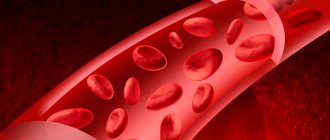Swelling of the legs, unfortunately, is well known to many. The legs swell and increase in volume. This happens because excess intercellular fluid accumulates in the tissues. Normally, the volume of fluid in the body is constant: as much as it enters the body, so much should be excreted. If fluid is retained in the body (and this excess volume can be measured in liters), edema occurs. The formation of edema can also be caused by fluid redistribution (disruption of the normal distribution of fluid throughout the body).
The tissues of various organs and parts of the body can swell, but most often it is the legs that suffer (primarily the ankles and shins). This is explained, firstly, by the fact that the legs bear the maximum load (they have to bear all of our weight - if we stand or walk; hence, long standing work or prolonged walking are factors contributing to swelling of the legs); secondly, the legs are the lowest part of our body; gravity helps the fluid descend here and prevents its outflow.
Swelling of the legs is not always obvious. Its first manifestation may be the appearance of a sock elastic mark on the ankle. At the next stage, the usual shoes become tight. Women notice that the straps of their sandals begin to “sink,” as it were, sinking into loose and soft fabric. Under certain circumstances, the legs can swell even in a healthy person. As a rule, swelling is observed in the evening, as a result of the stress placed on the legs during the day. However, if swelling occurs regularly or persists constantly, you should consult a doctor. Edema is a symptom of a wide range of diseases, many of which are very serious and require immediate treatment.
Physiological edema
Swelling of the legs can be caused by physiological reasons, that is, be a consequence of special circumstances affecting a healthy body, and not a manifestation of a disease. These reasons include:
- salty food. Salt binds water. And if you eat a lot of salty foods, especially at night, you may notice swelling in the morning;
- alcohol. Alcohol also retains water. Therefore, after drinking alcohol, a person looks puffy. The problems are not limited to the face; the legs can also swell;
- hot weather. In the heat, blood vessels dilate as the body tries to normalize heat exchange. More blood flow means the risk of congestion and swelling in the legs increases;
- prolonged sitting or standing. If the legs are in one position for a long time, the blood stagnates in them, which leads to swelling. The worst thing is to sit with your legs crossed. Standing in one place for a long time is also not useful. Swelling of the legs is typical for people in standing professions - hairdressers, salesmen, cooks;
- uncomfortable shoes. If shoes disrupt normal blood circulation in the foot (high heels, narrow arches, tight straps), wearing them will lead to swelling.
The mechanism of edema in cancer wasting
With cancer cachexia, “hunger” edema develops. This occurs against the background of a decrease in the level of proteins circulating in the blood. This condition is called hypoproteinemia, which is accompanied by the release of a large amount of plasma into the intercellular space. This results in a decrease in blood pressure.
An increase in blood pressure may also occur if the compensatory mechanism is “turned on.” Due to an increase in vascular pressure, the liquid part of the blood is released into the interstitial space - this is fraught with even greater swelling of the tissues. The considered principle of formation is characteristic of kidney diseases in the presence of renal and liver failure, as well as cirrhosis of the liver.
In the terminal (final) stage of cancer, malnutrition is associated with deterioration of liver function - the required amount of proteins ceases to be produced. Malignant cells need increased amounts of energy, so they “rob” healthy tissues of the body. In other words, a vicious circle is formed in which, with insufficient synthesis in the liver, increased protein burning occurs by cancer cells.
Excessive accumulation of fluid in tissues and a lack of circulating plasma leads to the release of biologically active substances and hormones in the body that maintain blood pressure. This leads to suppression of the respiratory and cardiovascular systems, which can worsen the condition of the cancer patient.
Anasarca (diffuse swelling of the lower part of the body) and hidden edema due to cancerous depletion of the body require immediate therapeutic measures. In this case, one dropper with a protein solution is not enough. There is a need to stop pathological reactions. At the Medscan clinic, pathological reactions are treated using individually developed, pathogenetically oriented treatment programs.
“Female” causes of leg swelling
In women, swelling of the legs can be caused by special reasons:
- premenstrual syndrome. Before menstruation, the hormonal balance is disrupted - the relative content of estrogens increases, and estrogens retain fluid in the body;
- pregnancy. During pregnancy, a woman's body produces a large amount of progesterone, which reduces vascular tone. This contributes to stagnation of blood in the legs. The growing fetus can compress large vessels, which also causes edema - this reason becomes significant in the later stages. Swelling can also be a manifestation of gestosis (late toxicosis of pregnancy).
Causes of edema in cancer
The development of edema occurs as a result of an imbalance in the release of plasma cells into the tissue from the bloodstream.
Normally, the liquid should be completely absorbed by the venous capillaries, only in a “waste form”. Only 1/10 of the plasma should remain in the intercellular space, leaving a little later into the lymphatic channel. Malignant processes occurring in the body cause an imbalance. Vascular structures become “clogged” with cancer cells, and lymphatic vessels stop “pumping” lymph. This mechanism is typical mainly for cervical cancer, when metastases have already spread to the pelvic and inguinal lymph nodes. A similar process occurs after surgery on the mammary gland for lymphedema (lymphostasis with complete removal of the lymph nodes of the armpits).
Swelling due to cancer also occurs in the case of an inoperable tumor, if there is an enlargement of regional lymph nodes due to metastasis. They stop functioning properly, squeezing large vessels. This condition is often aggravated by a bleeding disorder.
Swelling of the legs as a symptom of pathological conditions and diseases
Swelling caused by a physiological cause is usually symmetrical, that is, it is observed on both legs at once. Such swelling is usually mild; If you press with your finger, a mark remains at the point of pressure, which disappears right before your eyes. When physiological conditions are restored to normal, edema quickly disappears. The absence of these signs, especially if the swelling does not go away within 24 hours, is a reason to consult a doctor: in this case, the swelling is most likely caused by a pathological cause.
The list of diseases, the manifestation of which can be swelling of the legs, is extensive. Here are the main ones:
- heart failure. If the heart's activity is impaired, it cannot maintain blood circulation at a sufficient level. Congestion occurs, and first - in the area furthest from the heart, and these are precisely the legs (feet, ankles and legs). The swelling that occurs for this reason is symmetrical; swelling intensifies in the evening (under the influence of gravity, blood accumulates in the lower part of the circulatory system);
- vascular diseases. With varicose veins, swelling increases gradually as the disease develops. My legs get tired, and in the evening they begin to ache and swell. By morning the swelling goes away. If one leg is swollen (and hurts), then it may be phlebitis (inflammation of a vein) or thrombosis (a thrombus blocks the lumen of the vessel, as a result of which the blood flow is disrupted, plasma enters the surrounding tissues, causing swelling);
- renal pathology. With renal origin, the peak of swelling occurs in the morning. At the same time, not only the legs swell (swelling on the face is characteristic - “bags under the eyes”), but mainly the feet swell on the legs;
- liver diseases (cirrhosis, liver cancer);
- lymphostasis (impaired lymph outflow);
- erysipelas is an infectious disease caused by group A streptococcus. Lymphostasis is often a consequence (complication) of erysipelas;
- joint diseases - rheumatoid arthritis, injuries, etc. In this case, the affected joint swells;
- thyroid dysfunction. With hypothyroidism, swelling (myxedema) can be observed throughout the body, including the legs. With hyperthyroidism, the surface of the lower leg thickens (in front, just above the ankle). At the site of swelling, the skin becomes keratinized and flaky, hair falls out (hair follicles are lost). When you press on the swelling, there is no trace left, it is elastic, it cannot be crushed into a fold;
- allergic reactions. With allergic arthritis, the joints become swollen. Possible swelling from insect bites.
Individual treatment of edema is ineffective. Edema can be removed if the cause that caused it is random (physiological edema, minor injuries, insect bite). In other cases, treatment of the disease is required, the symptom of which is swelling of the legs.
ORTEKI phlebologist explained why legs swell and how to solve this problem
ORTEKI surgeon-phlebologist Armen Avakyan shared with readers of the sports Internet portal championat.com tips on how to avoid swelling of the legs.
When we do not move for a long time, whether working in an office, sitting in a car or on an airplane, the leg muscles do not contract and therefore do not contribute to blood flow. This causes stagnation of blood in the veins of the lower extremities. Which, in turn, can cause pain, heaviness, fatigue in the legs and swelling.
Edema is a symptom of improper functioning of the venous system. If you ignore it, you can provoke or aggravate the development of varicose veins and chronic venous insufficiency.
Why do my legs swell?
Blood moves through the vessels first from the heart to the tissues and organs - filling them with oxygen and nutrients. And then it goes back to the heart, carrying metabolic products and carbon dioxide. In this case, the arteries are responsible for the movement of blood from the heart, and the veins are responsible for the return flow to it.
Blood flows through the veins of the lower extremities from bottom to top. Its correct movement is controlled by valves, which maintain blood flow strictly in one direction towards the heart at relatively low pressure in the veins. The largest number of these valves are located in the veins of the legs, in particular in the lower leg area. Their work depends on muscle contractions that stimulate blood movement. This mechanism is called the musculovenous pump of the leg.
When we do not move for a long time, work in an office, sit in a car or are on an airplane, the leg muscles do not contract and therefore do not contribute to blood flow. This causes stagnation of blood in the veins of the lower extremities. What causes pain, heaviness, fatigue in the legs and swelling.
Edema is usually experienced by office workers who move little. They also often occur in those who constantly work “on their feet”: hairdressers, surgeons, salespeople, stylists, teachers, doctors, etc. Excessively intense sports can also be dangerous for the venous system of the legs: for example, increased pressure when lifting weights negatively affect the condition of the veins. In addition, swelling of the legs often appears in pregnant women, since during this period the woman’s venous system is heavily overloaded.
How to prevent swelling?
It’s worth preparing for a long trip by choosing comfortable shoes in advance. In narrow shoes or in a pair of the wrong size, the feet experience extra stress, even in a static position. Because it creates a lot of pressure on the forefoot. This can impair circulation and cause swelling as the legs are constantly tense.
A suitable shoe option is with a heel 2-4 cm high, a wide front section and a shape-resistant heel. It is recommended to wear shoes with these parameters every day, not only when traveling.
“Smart” compression hosiery helps to take care of the health of your legs during long trips. These are special medical devices that recognize situations when the venous system of the lower extremities needs support. They help eliminate pain and swelling, and help get rid of the feeling of fatigue and heaviness in the legs.
Compression jersey applies a strictly specified pressure to the surface of the legs. It is distributed unevenly along the leg: from the maximum value in the ankle area to the minimum in the shin or thigh area, depending on whether it is knee socks, stockings or tights.
This pressure stimulates the venous system of the legs. Blood circulates better, stagnation and conditions for the formation of edema disappear.
What exercises help relieve swelling?
To improve your well-being, your doctor recommends doing warm-up exercises more often. The simplest exercises will do:
- head rotation;
- circular movements with hands;
- lunges with alternating legs;
- stretching;
- bends;
- squats.
This exercise helps improve metabolic processes in the body, accelerate blood supply to the muscles and saturate them with oxygen. You will not only cheer up, but also improve the functioning of the venous system. Remember: if we move, the muscular-venous pump is actively working, which means blood flow improves.
Since blood moves from the bottom up through the veins of the legs, it is useful to keep the legs above the level of the heart. You can periodically sit with your feet on the table, because this position promotes blood flow. Also, to prevent vein diseases, you need to adhere to the right lifestyle. Sport improves muscle function and blood circulation in general. Moderate exercise in the gym, walking, running, swimming and similar activities help prevent swelling and other problems with veins.
Source
Which doctor should I contact for swelling of the legs?
If you have swelling of the legs, you should first consult a general practitioner (general practitioner or family doctor). In order to determine the cause of the swelling, a simple examination may not be enough. You must be prepared that you will need to undergo a series of tests or undergo instrumental examination (ultrasound, MRI). In some cases, after receiving the results of the examination, the therapist may refer you to specialized specialists (cardiologist, urologist, etc.).
Diagnosis and clinical symptoms
Diagnostic measures for edematous syndrome are not particularly difficult. This condition has certain manifestations, including changes and thickening of the skin. It gets colder or warmer. After pressing, a “dimple” remains, which disappears after a while.
To recognize edematous syndrome, a comprehensive examination is prescribed, which includes:
- serum protein electrophoresis;
- determination of T3 and TA in blood serum;
- liver function tests.
A radioimmunoassay test is also performed to determine TSH in the blood serum. The patient is required to undergo a chest x-ray, electrocardiography and CT scan of the chest. The doctor may order Doppler ultrasound of the veins, cardiac angiography, renal tomography and lymphangiography.
If therapeutic measures have not been taken, then the patient's condition worsens. There is rapid weight gain and thickening of tissues, which in consistency resemble soft dough. The easiest way to diagnose is asymmetrical lymphedema, which is a typical sign, for example, swelling of the arm due to cancer or an increase in the volume of the foot. At the same time, it becomes impossible to gather the skin into a fold.
The clinical picture depends on the affected area:
- Lung cancer
. Accompanied by intense penetration of fluid into nearby tissues. Edema in lung cancer is hidden in nature - the volume of urine decreases and body weight increases slightly. With lung cancer, swelling of the legs occurs and signs such as dryness and excessive peeling of the skin occur. After pressing on the skin of the legs, a small depression appears, which disappears after a short period of time. - Breast cancer
. Accompanied by the development of lymphostasis - difficulty in the outflow of lymphoid fluid. With this complication, the volume of the upper limbs and mammary glands increases. There is a risk of developing irreparable consequences caused by disruption of microcirculation processes. The appearance of trophic ulcers and sepsis (with the development of an infectious disease) is possible. - Liver cancer
. A malignant tumor is accompanied by swelling of the legs and lumbar region, which is associated with damage to the lymph nodes or thrombosis of the inferior vena cava. In this case, rapidly progressing ascites also appears. This is accompanied by an increase in abdominal volume and intra-abdominal pressure. The patient's condition worsens and characteristic shortness of breath occurs.
Legs with cancer may swell when undergoing radiotherapy to the area of the inguinal lymph nodes. Large malignant tumors also block the outflow of lymph, which can lead to its accumulation. The progression of the pathological process leads to cyanosis, in which marble stains appear. The condition is accompanied by severe pain and limitation of motor activity.
Swelling muscles compressing blood vessels cause the development of secondary venous thrombosis. This aggravates the patient's suffering and leads to the migration of thrombotic masses into the pulmonary vessels, which poses a threat of death.
When else should you not take aspirin?
- With high blood pressure.
Because taking it may increase the risk of hemorrhagic stroke in this case. If you have hypertension, you should take aspirin only when your blood pressure is adequately controlled.
- If you suspect a stroke.
If we are dealing with a suspected stroke (a person suddenly developed severe weakness in an arm or leg, speech, motor disturbances, the corner of the mouth is drooping, he cannot smile, etc.), in no case should aspirin be given in this situation. There are no objective signs that allow one to clearly differentiate between hemorrhagic (associated with cerebral hemorrhage) and ischemic (associated with blockage of a cerebral artery by an atherosclerotic plaque) type of stroke. And if the stroke is hemorrhagic, and we give such a person aspirin, then it’s scary to imagine how it could end...
All you need to do if you suspect a person is having a stroke is to lay him in a horizontal position, try to calm him down and call an ambulance as soon as possible.









